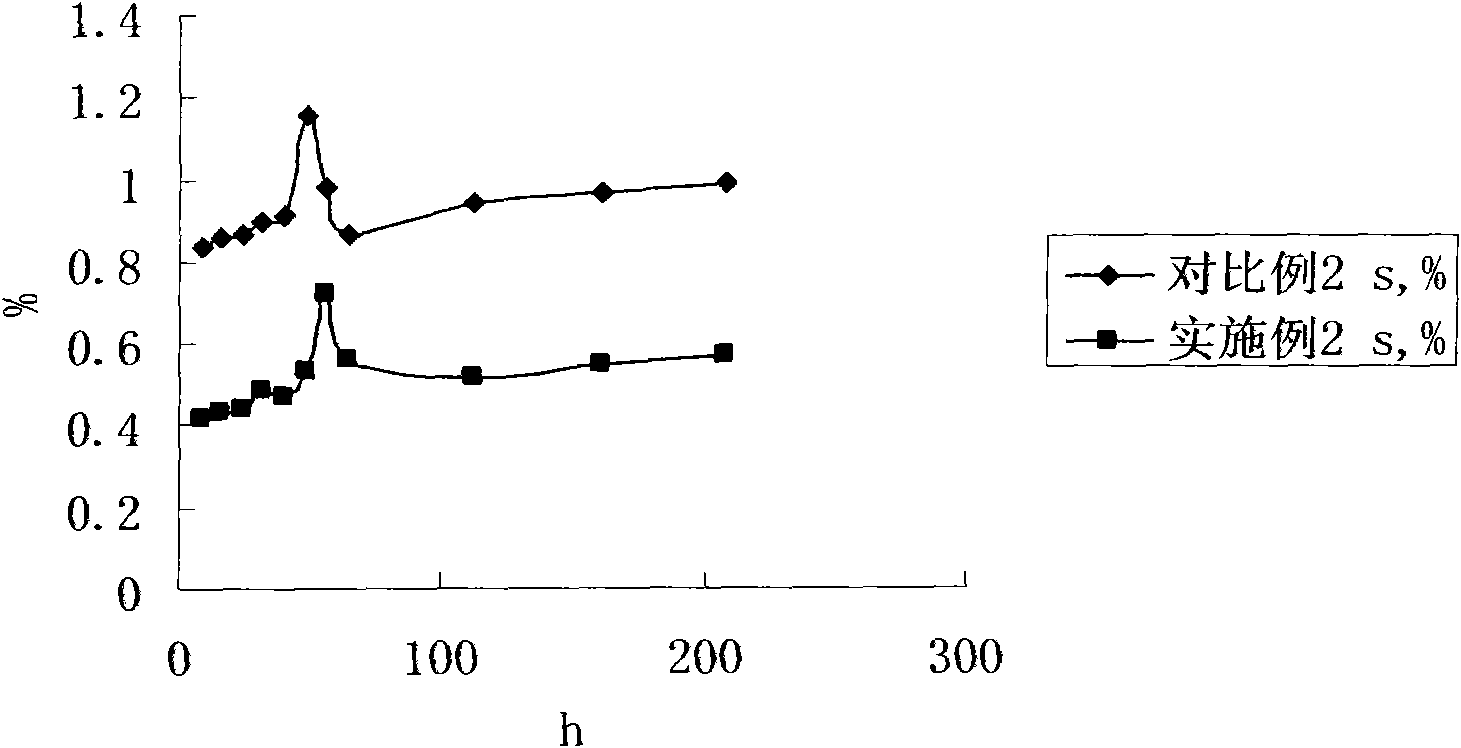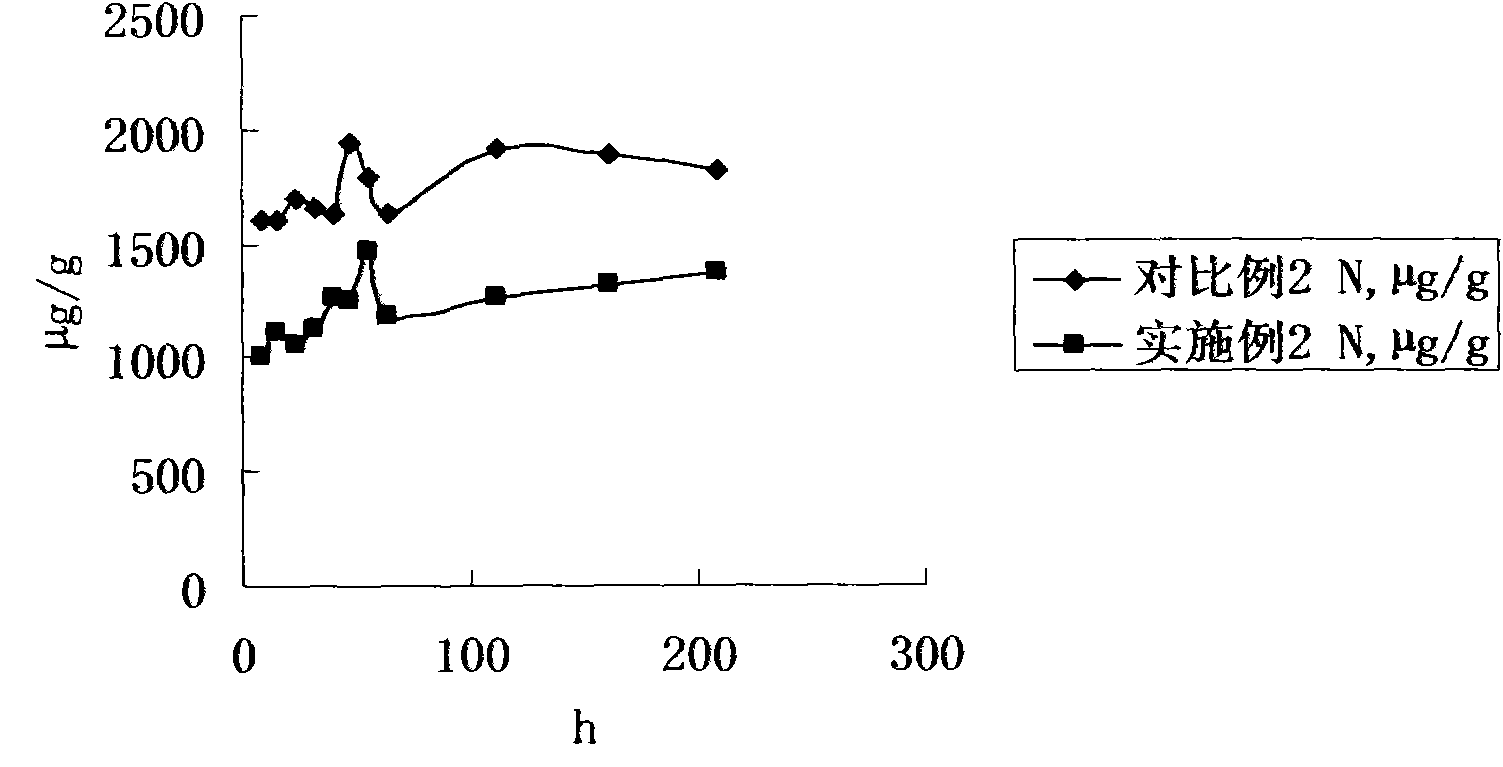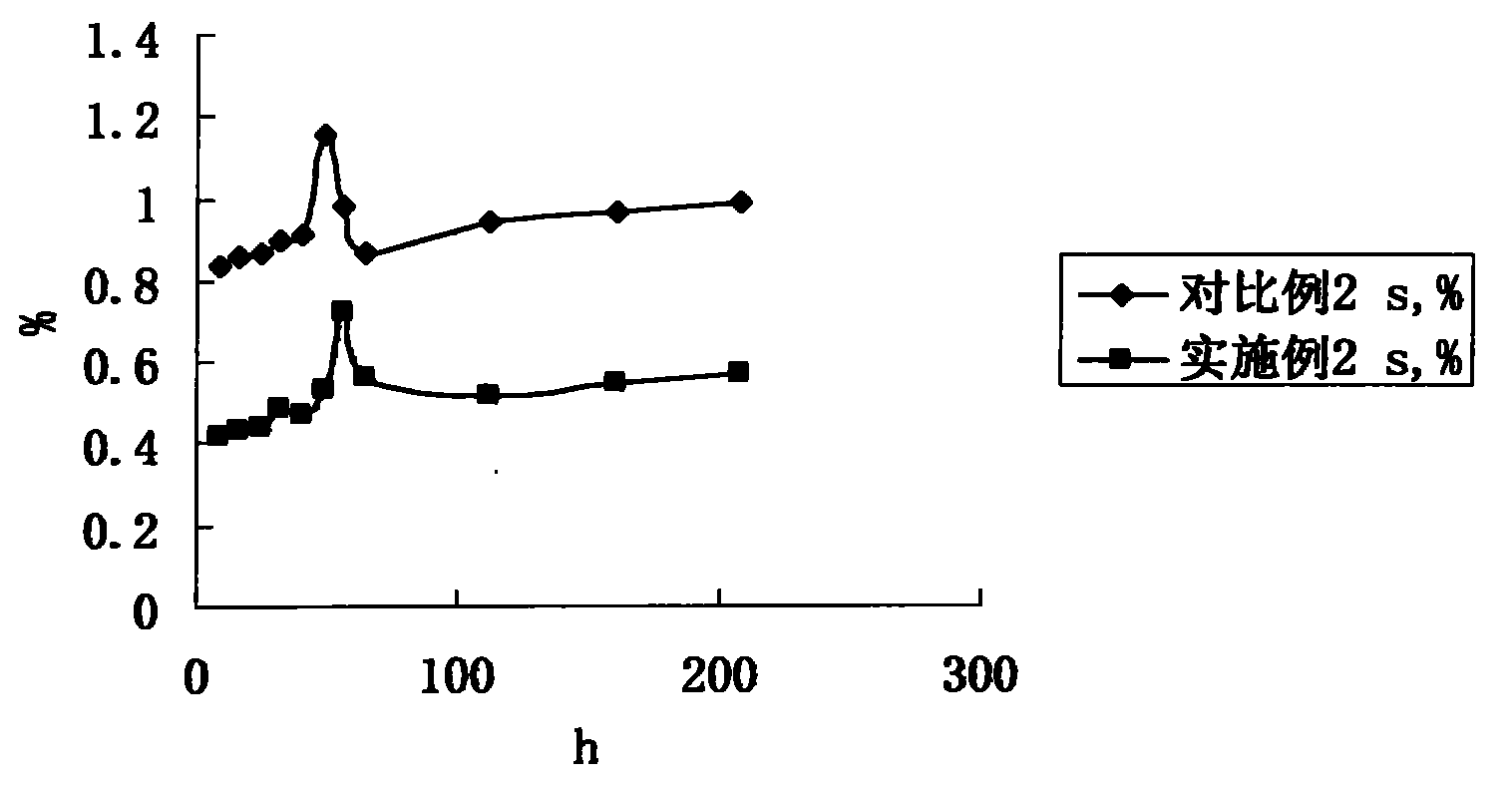Titanium-contained aluminum oxide carrier and preparation method thereof
A technology of alumina carrier and titanium alumina, which is applied in the direction of catalyst carrier, chemical instrument and method, catalyst activation/preparation, etc., can solve the problems of poor mechanical strength, small specific surface area, weak acidity, etc., so as to prolong the operation period and increase Good deposition rate and good channel penetration
- Summary
- Abstract
- Description
- Claims
- Application Information
AI Technical Summary
Problems solved by technology
Method used
Image
Examples
Embodiment 1
[0045] Under stirring conditions, 750g of aluminum nitrate nonahydrate and 90g of urea were mixed and heated to 100°C, and added to a mixture of 32g of polyisobutylene maleate triethanolamine maleate and 88g of 150HVI neutral oil at the same temperature to form supersolubilizing micelles , and then reacted at 100°C for 3 hours to obtain nano-aluminum hydroxide gel. Wash three times with 200ml of distilled water, add 35ml of metatitanic acid suspension with a solid content of 200g / L and mix evenly, and dry the solid phase obtained after separation at 120°C for 10 hours. Mix 70g of titanium-containing nano-aluminum hydroxide gel dry powder with 30g of macroporous alumina, mix 6g of acetic acid, 60g of water and 5g of ethanol, and mix the above two mixtures evenly, and then shape them in an extruder. The pressure is at 30MPa. The molded product was dried at 130°C for 10 hours, calcined at 200°C for 3 hours, and then calcined at 750°C for 20 hours with a heating rate of 5°C / min t...
Embodiment 2
[0047] The titanium-containing alumina carrier TA1 obtained in Example 1 is impregnated with active metals, and the resulting residue hydrodenitrogenation catalyst HDN-1 contains 18% (mass fraction) MoO 3 , 6% (mass fraction) NiO.
[0048] The residual oil hydrodenitrogenation catalyst HDN-1 was used in the hydrodenitrogenation experiment of the residual oil raw material (see Table 1 for properties), and the test conditions were as follows: reaction temperature 390°C, hydrogen-to-oil volume ratio 1000, liquid hourly volume space velocity 1.0h -1 , hydrogen partial pressure 15.4MPa, continuous operation for 200 hours.
Embodiment 3
[0055] Mix 90g minus three-line dewaxed oil and 70g SP-80, heat to dissolve at 80°C, and mix well; heat 750g of aluminum nitrate nonahydrate to 80°C to melt, slowly add to the above mixture, and mix for 20 minutes to form a uniform supersolubilized colloid. 320 g of saturated ammonia water at 20° C. was added dropwise and aged for 3 hours to obtain a nano-aluminum hydroxide gel. Wash three times with 200ml of distilled water, add 100ml of metatitanic acid suspension with a solid content of 200g / L and mix well, and dry the solid phase obtained by separation at 120°C for 10 hours. Mix 90g of titanium-containing nano-aluminum hydroxide gel dry powder with 10g of binder pseudo-boehmite; mix 2g of dilute nitric acid (mass concentration 17%), 15g of water and 25g of cosolvent ethanol, and mix the above two The mixture is uniformly mixed on a mixer, and then shaped in an extruder, and the pressure is controlled at 20MPa. The molded product was dried at 110°C for 15 hours, calcined a...
PUM
| Property | Measurement | Unit |
|---|---|---|
| diameter | aaaaa | aaaaa |
| specific surface area | aaaaa | aaaaa |
| pore size | aaaaa | aaaaa |
Abstract
Description
Claims
Application Information
 Login to View More
Login to View More - R&D
- Intellectual Property
- Life Sciences
- Materials
- Tech Scout
- Unparalleled Data Quality
- Higher Quality Content
- 60% Fewer Hallucinations
Browse by: Latest US Patents, China's latest patents, Technical Efficacy Thesaurus, Application Domain, Technology Topic, Popular Technical Reports.
© 2025 PatSnap. All rights reserved.Legal|Privacy policy|Modern Slavery Act Transparency Statement|Sitemap|About US| Contact US: help@patsnap.com



